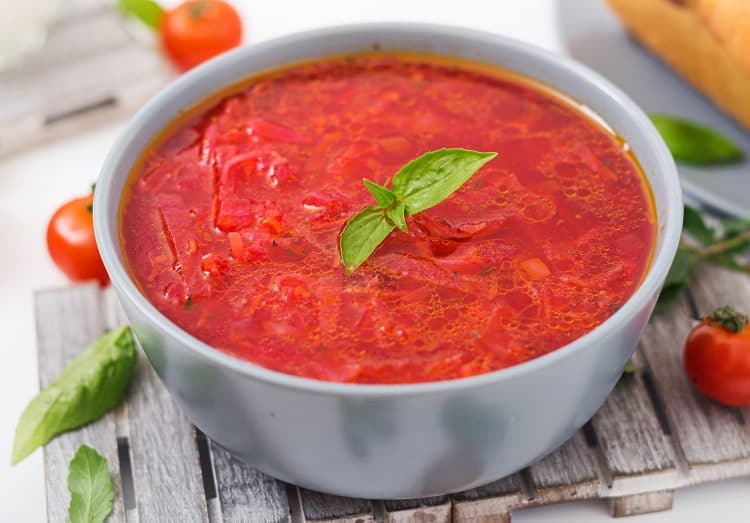A large and growing percentage of adults are overweight or obese. This is true in America and most other developed countries. The easy access to food and reduced need for physical activity means that many people consume more calories than they need, and those excess calories are converted to fat, leading to weight gain.
According to studies, the percentage of adults who are overweight or obese is 41.9 percent. This is a considerable increase since the 1960s when only 13% were considered overfat (1).
Because of this, many people want to lose weight, which they attempt to do with diet and exercise. Unfortunately, most of these people are unsuccessful. It’s not for lack of trying, but many dieters either fail to lose weight at all or quickly regain the weight they’ve lost. Some even gain back more weight than they shed, essentially dieting themselves fatter.
Needless to say, this situation is incredibly frustrating and disheartening. After all, if dieting so often fails, why bother trying to lose weight at all?
However, in many cases, failing to lose weight is actually the result of making certain common mistakes. These roadblocks make it much harder to shed those unwanted pounds.
Level Up Your Fitness: Join our 💪 strong community in Fitness Volt Newsletter. Get daily inspiration, expert-backed workouts, nutrition tips, the latest in strength sports, and the support you need to reach your goals. Subscribe for free!
In this article, we reveal the diet and fat loss mistakes that you need to avoid to make losing weight easier.
Fat Loss Vs. Weight Loss – What’s the Difference
The terms fat loss and weight loss are often used interchangeably but actually mean different things. So, before we reveal the diet mistakes you need to stop making, let’s define these expressions.
Fat Loss
When you consume more calories than your body needs, it converts this excess energy into body fat and stores it for later use. It doesn’t matter where those calories come from – protein, carbohydrates, fat, or alcohol – the fate of excess calories is always the same.
It’s generally estimated that one pound of fat equals 3,500 calories. So, if you consume 500 calories more than you burn each week over the course of seven weeks, you’ll gain a pound of fat.
Therefore, to lose fat, you need to burn more calories than you consume. This invariably means eating less but may also involve doing more physical activity, including exercise. We call this creating a calorie deficit.
Based on the idea that a pound of fat equals 3,500 calories, a 500-calorie per day deficit should result in weight loss of one pound per week.
Losing fat invariably involves losing weight, but this is not always the case. For example, you could lose five pounds of fat while gaining two pounds of muscle. While the scales may indicate your diet has not been as successful as you hoped, such changes in body composition can have a significant impact on how you look and feel and your health.
Weight Loss
Your weight is the sum total of everything that makes up your body. This includes various substances, including skin, muscle, bone, internal organs, connective tissue, chemicals, and fluids. Broadly speaking, the components that make up your body weight can be divided into two groups – fat mass (FM) and fat-free mass (FFM). The relationship between FM and FFM mass is usually expressed as a percentage, known as your body fat percentage.
As such, you can lose weight by reducing the amount of any of these components in your body. For example, if you exercise in a hot room and sweat heavily, you’ll lose weight by shedding water. Conversely, if you were put on forced bedrest, e.g., after an illness, you’d lose muscle mass due to prolonged inactivity. This would also lead to weight loss.
However, in almost every instance, people who are overweight want to lose fat. After all, it’s fat that bulges out over your waistband, gives you a double chin, and can negatively affect your health.
Unfortunately, many dieters get very hung up on their weight and measure their success with their bathroom scales. And while weight loss usually accompanies fat loss, it doesn’t tell the whole picture. Fat loss should always be our primary goal, and any weight loss is actually a welcome by-product.
So, while fat loss and weight loss are often used interchangeably, it’s important to stress that they’re actually different things, and what we really need to focus on is fat loss and improvements in body composition. If you see the words “weight loss” in this or any article, do a mental flip and switch it to fat loss.
The Top Diet and Fat Loss Mistakes You Need to Avoid
Dieters often inadvertently sabotage their progress by making one or several common mistakes. These mistakes are why so many people fail to lose weight or regain what they have lost soon after. Avoid these tripwires, and your fat loss journey should go much more smoothly.
1. Trying to Starve Yourself Slim
There is no denying that very low-calorie diets (VLCDs) lead to rapid and dramatic weight loss. When you are used to consuming 2,500 calories a day, and you suddenly slash your intake to 1,000 or less, weight and fat loss are guaranteed.
Any eating plan that promises rapid weight loss, e.g., lose 30 pounds in 30 days, will be a VLCD.
While this type of diet will produce quick results, it’ll only work for as long as you can stick with it. Unfortunately, for most people, that won’t be very long! The problem with VLCDs is that they come with a host of unpleasant side effects and drawbacks, which make them unsustainable for most people.
These side effects and drawbacks include (2):
- Extreme Hunger
- Cravings
- Food Obsession
- Electrolyte Imbalances
- Low Energy Levels
- Nutritional Deficiencies
- Mood Swings
- Insomnia
- Muscle Atrophy
- Heart Arrhythmias
- Low Blood Pressure
- Stomach and Digestive Upsets
Needless to say, all of these things make VLCDs hard, if not impossible, to stick to. In simple terms, they make your life miserable. Hunger will be a constant companion, and low energy levels will make every day feel like an uphill struggle.
VLCDs are used in medical settings so patients lose weight quickly before an operation. They’re used with medical supervision and are only meant for short-term use. Many are liquid-only diets. Trying to lose a VLCD in a regular setting is a mistake, and trying to starve yourself slim seldom works.
Summary: Very low-calorie diets (VLCDs) often result in rapid initial weight loss but are usually unsustainable and very unpleasant. They are not a good solution for long-term weight management and seldom live up to their over-hyped promises.
2. Demonizing Foods or Food Groups
Many diets ban certain “bad” foods or food groups. For example, the ketogenic diet (keto) cuts almost all carbohydrates from your diet, while veganism prohibits all animal-based products. These are known as elimination diets and can be very hard to stick to.
Here’s the biggest problem with elimination diets – it’s human nature to want what you’re told you cannot have. So, any diet that bans a food or food group will probably make you crave that thing even if you didn’t before.
For example, imagine a diet that forbids bread. What do you want now, even if you didn’t eat much in the past? A thick slice of fresh bread, a sandwich, and maybe some toast!
The more foods a diet bans, the more cravings you are likely to have. And while you may be able to resist those cravings for a while, eventually, they’ll wear down your willpower, and you’ll give in. However, after not eating a particular food or food group for a time, you’ll probably overindulge to make up for not having been allowed to eat it. Needless to say, this will probably undo any of the benefits of your elimination diet.
Summary: Banning certain foods doesn’t alter your metabolism, body chemistry, or how your body burns calories or stores fat. It’s just an easy way to stop you from eating as much. Foods are often banned on a whim and for no logical reason. So, while elimination diets can work, the subsequent cravings mean that most people cannot adhere to them for long enough for them to be effective.
3. Following the Latest Fad Diet
Fad diets have been around for centuries. In most cases, they have no scientific foundation and may be harmful, even if they help you lose weight. There are lots of different fad diets, some of which are VLCDs, while others are elimination diets. Others are just plain weird!
The problem with fad diets, apart from their long list of apparent drawbacks, is how heavily publicized they often are. In their endless quest for attention, some fitness influencers promote certain diets to gain followers and likes. The more “out there” the diet is, the more attention they’ll get. Unfortunately, it’s the end user (you!) who suffers when you fail to lose weight or become unwell.
Here are some examples of past and current fad diets. Please note, these are NOT made up, and someone, somewhere, invented these ridiculous eating plans:
- Cabbage Soup Diet: This diet involves consuming large quantities of cabbage soup for seven days to achieve rapid weight loss.
- Cotton-Ball Diet: Individuals eat cotton balls soaked in juice or smoothies with the belief that they will fill the stomach without adding calories.
- Sleeping Beauty Diet: This diet suggests that sleeping for extended periods will prevent eating, thereby leading to weight loss.
- Baby Food Diet: Adults replace their meals with jars of baby food to reduce calorie intake.
- Tapeworm Diet: Ingesting a tapeworm or tapeworm pills to allow the parasite to consume nutrients and reduce caloric absorption.
- Breatharianism: The belief that one can live on sunlight and air alone without needing food or water.
- Master Cleanse: Consuming only a mixture of lemon juice, water, maple syrup, and cayenne pepper for ten days to detoxify the body and promote weight loss.
- Grapefruit Diet: Eating half a grapefruit before every meal with the idea that the fruit’s enzymes will help burn fat.
- Blood Type Diet: Eating foods that are supposedly compatible with one’s blood type to improve health and lose weight.
- Werewolf Diet: Fasting according to the lunar calendar, believing that the moon’s phases affect the body’s water retention and can aid in weight loss.
Needless to say, these diets are unhealthy and sustainable. Despite this, every year, more fad diets emerge, gain popularity, and dupe people into trying them. Losing weight requires a long-term commitment to healthy eating and moderate calorie restriction. Fad diets do NOT fit this description.
Summary: Fad diets are nothing new but invariably share some common characteristics, including lack of scientific backing, limited food choices, and heavy promotion. Most fad diets are unsustainable, and some may even be dangerous. Fad diets? Just say no!
4. Overindulging in Healthy Foods
Losing weight and eating healthily should go hand in hand. However, regardless of what you may have heard, calories in vs. calories out is the cornerstone of effective weight management, and even healthy foods, when consumed to excess, can lead to weight gain.
For example, let’s say you’re eating more protein because you’ve been told that it helps preserve muscle mass and speeds up your metabolism. Both of these statements are true, by the way.
So, you increase your protein intake to a substantial 250 grams per day. Good for you!
However, because you are ingesting a lot of calories in the form of this extra protein, rather than lose weight, you end up gaining weight instead.
This same situation can occur when you overindulge in any so-called healthy food, such as fruit, whole grains, nuts, starchy vegetables, and low-fat/low-sugar convenience foods. Healthy foods are not immune to causing weight gain. And while it might be trendy to say that calories don’t matter, they actually matter a lot.
Summary: While the calories in-calories out model is somewhat flawed, and not all calories were created equal, calories still count. Eating too many calories from any source can impair weight loss and even cause weight gain, even when that food is deemed to be healthy. Do not overindulge, or you may end up creating a calorie surplus rather than a deficit.
5. Consuming Too Many Liquid Calories

While most people know how food affects their weight and weight loss efforts, they’re often unaware of how impactful liquid calories can be. Liquid calories come in all shapes and sizes, including soda, coffee-based drinks, alcohol, smoothies, sweet teas, milkshakes, sports drinks, and protein shakes.
The problem with liquid calories is that a) they contain large amounts of sugar, which your body likes to store as fat, and b) they aren’t very filling, so you are liable to consume a surfeit of calories and gain weight.
How many calories are in your beverages? Obviously, that depends on what you’re drinking and the serving size. However, check out these values to see how something as familiar as soda could be hurting your weight loss efforts:
- Regular 12-ounce Can: 140-150 calories
- 20-ounce Bottle: 240-260 calories
- 30-ounce Big Gulp: Around 400 calories
- 44-ounce Super Big Gulp: 550-600 calories
- Movie Theater Sizes (32 to 64 ounces): 400 to 800 calories
- 64-ounce Double Gulp: Up to 800 calories
- Team Size (128 ounces): Up to 1,600 calories
Needless to say, ingesting an extra 300-500 calories a day could undo any potential deficit you create by eating less. While the occasional small soda won’t necessarily derail your weight loss efforts, a daily Big Gulp probably will.
Summary: Sweetened beverages often contain a lot of sugar and calories. Their lack of fiber means they aren’t very filling and easy to consume in large amounts. Cut down on liquid calories to reduce your calorie intake without eating less food. For some people, this is an easy path to weight loss.
6. Consuming Too Little Fiber
The Standard American Diet (SAD) contains a lot of processed foods. Even low-calorie, low-fat, and low-sugar weight-loss-friendly foods are highly processed. Processed foods are cheap, abundant, easy to store, and easy to cook. Examples include white baked goods, ready meals, canned foods, processed meats, etc.
While processed foods undeniably have some advantages, processing invariably involves removing most of the fiber from the original foodstuff. This lack of fiber is problematic for weight loss.
Level Up Your Fitness: Join our 💪 strong community in Fitness Volt Newsletter. Get daily inspiration, expert-backed workouts, nutrition tips, the latest in strength sports, and the support you need to reach your goals. Subscribe for free!
What is fiber? Let’s discuss!
Fiber is found in plant foods. It’s the ingestible outer layer of grains and is found on the outside and inside of fruits and vegetables. Because it’s indigestible, fiber essentially has no calories. However, this doesn’t mean it has no dietary value.
There are two types of fiber – soluble and insoluble. This refers to how they react with water. Soluble fiber acts like a sponge, soaking up liquids, while insoluble fiber has a woody texture. Fiber is sometimes known as roughage, and most people do not eat enough. The recommended adult fiber intake is between 25-35 grams a day, but the average person consumes just 15 grams.
Ingestible fiber is bulky and filling, so it can help control your appetite. Hunger is an unavoidable part of most weight loss diets, and anything that lessens hunger is very valuable. While most people can resist hunger for a few days, eventually, it’ll force you to break your diet; hunger always wins!
In addition, fiber helps regulate your blood glucose. Stable blood glucose levels are linked to less hunger and fewer energy peaks and troughs. Fiber is also good for many aspects of your health, including the regulation of good and bad cholesterol, better digestive health, and a lower risk of chronic constipation.
High-fiber foods also tend to be lower in calories than low-fiber foods. So, more filling and less calorific – it’s no wonder that fibrous foods are so crucial for successful weight loss.
Summary: While processed foods can be low in calories and are undeniably convenient, that convenience means most diets are low in fiber. Eating more high-fiber foods, such as fruit, vegetables, and whole grains, can help you feel fuller for longer, as well as offering myriad health benefits.
7. Ignoring the Importance of Protein

While eating too much of any food can lead to weight gain, protein could be one of the most important foods in your battle against your bulging waistline. While protein contains calories (four per gram), your body doesn’t like to use protein for energy. Instead, it breaks protein down into building blocks called amino acids, which it then uses for muscle growth and repair.
Digesting and utilizing protein costs a lot of energy, so protein is said to have a high thermal effect. In simple terms, this means eating protein increases your metabolic rate and burns calories. Therefore, increasing your calorie intake from protein while lowering your intake of carbs and fats could lead to faster fat loss.
That said, as discussed earlier, a surplus of calories from any source will be converted into and stored as fat, so don’t consume so much protein that you create a calorie surplus. For most people, this means eating about 0.7 to 1.0 grams of protein per pound of body weight. You can get a personalized protein recommendation from this online calculator.
As well as its high thermal effect, protein will also help keep you feeling fuller for longer, so you are less likely to overeat. In addition, your body needs protein for muscle repair and growth. Consuming adequate protein can help you recover faster between workouts and also reduce muscle catabolism or breakdown, which can be a problem on some weight loss diets.
Summary: Consuming more protein can help speed up your metabolism. In addition, protein foods are digested slowly, which means they help keep you feeling fuller for longer. Consume about 0.7 to 1.0 grams of protein per pound of body weight. This extra protein will also enhance muscle repair and growth.
8. Diet Hopping
So, you’ve found a diet you like, and it’s working. It’s based on sound nutritional principles and contains plenty of healthy, natural foods. You might not be losing weight as fast as you’d like, but you’re making progress. Well done!
But, instead of sticking with your chosen sensible eating plan, you start looking for one that’s better and will lead to more rapid weight loss. When you find something that looks promising, you ditch your current plan and start over with a new diet.
Invariably, this involves a period of adjustment, and you may even regain weight as you get to grips with this new regimen. However, hunger and inconvenience soon start to make their presence known, and you look for another diet even though your original sensible eating plan was working.
And this happens again, and again, and again! You allow yourself to be seduced by the promise of fast, easy weight loss, hopping from one diet to the next. Sadly, each one is as ineffective as the last.
Unfortunately, the best weight loss diets aren’t sexy and won’t produce rapid results overnight. Instead, they’re actually pretty simple and can often be summed up in a few short sentences:
- Create a small, sustainable calorie deficit
- Eat adequate protein
- Consume less processed foods for more fiber
- Get plenty of natural fruits, vegetables, and whole grains
- Don’t drink your calories
- Minimize your intake of refined sugar and fat
- Be consistent and patient
Summary: Stop looking for the next best diet – it doesn’t exist. If it did, everyone who wanted to lose weight would be doing it already, and all the others would have vanished long ago. Embrace the basic tenets of weight loss and stick with them. Hopping from one diet plan to the next in search of the secret to losing weight is not the answer and will ultimately hurt your progress.
Related: Fix your Diet Forever in Six Weeks
9. Thinking That Supplements or Specific Foods Are the Answer
Contrary to what you may have read, heard, or been told, there are no real shortcuts to losing weight and keeping it off. Sure, surgery can work, as can some drugs, but neither offers a long-term weight management solution if you don’t fix your diet.
The same is true of supplements and specific foods. While they may have an impact, it’ll be tiny at best. Examples include fat burners, which give your metabolism a little bump; apple cider vinegar, which lowers blood glucose by improving insulin sensitivity; and psyllium husk powder, which is a type of fiber that may help you feel fuller for longer.
Despite the hype surrounding these things and the hundreds of pages on the internet extolling their virtues, any supplement or specific food won’t make up for a poor diet or being physically inactive. These shortcuts are not the answer to your weight loss woes.
Summary: Stop looking for secret weight loss and fat-burning cures – they don’t exist. Focus on creating a sensible, sustainable diet and exercise program, which are the real secret to successful weight loss.
10. Relying on The Scale to Measure Your Success
Back at the beginning of this article, we discussed how weight loss and fat loss are not necessarily the same thing. For example, you can lose weight by dehydrating, but despite weighing less, your body composition (fat mass vs. fat-free mass) will be unchanged.
Similarly, you can lose fat and not lose weight if you also gain muscle or increase how much water you are holding. Despite this, many dieters rely solely on the scales to measure their success. As such, many are disheartened despite losing fat or celebrate weight loss, which is only water.
While there is nothing wrong with monitoring your weight, it’s your body fat percentage that matters most. Unfortunately, this is not always easy to measure, whereas most people have access to bathroom scales.
So, look for other clues that you are losing fat. These include:
- Inches lost from your waist
- Clothes fitting better
- Looking slimmer in photos
- Seeing more muscle definition
- Friends telling you that you have lost weight
- More prominent chin or cheekbones
It’s also important to note that any weight loss won’t be linear, and your weight can even vary from day to day and hour to hour. But, over several weeks, you should see a downward trend, suggesting that everything is going in the right direction.
Summary: Do not live and die according to the reading on the scales. Consider your body shape and composition. So long as they are changing for the better, your scale weight is actually not that important.
10. Overestimating Calories Burned Through Exercise
A lot of exercisers are widely optimistic about how many calories they burn during a workout. Some fitness influencers brag that they can burn 1000 or more in an hour, but frankly, that’s nonsense.
Top marathon runners, running at close to four and a half minutes per mile, burn an estimated 1500 calories per hour. These are elite athletes with years of specific training behind them. They’re genetically gifted and able to exercise at an intensity that most people can only maintain for a couple of minutes.
The chances of a run-of-the-mill exerciser coming even close to this level of energy expenditure are slim to none.
Instead, most people are doing well to burn 400-500 calories per hour, and most are probably closer to 300. One thousand or more is unbelievable.
Overestimating calories burned during exercise means you’ll probably underestimate by how much you need to reduce your food intake to create a calorie deficit. You may even think you can lose weight without dieting, simply by exercising longer or harder.
To find out how many calories you burn per workout or for any other physical activity, please check out our library of fitness calculators. But, even then, understand that these are estimates only, and there are variables at play that we cannot account for.
Summary: While exercise burns calories at an accelerated rate, calorie expenditure is not as high as many people hope or think. Even top athletes struggle to burn more than 1000 calories an hour, so your group exercise class or HIIT session is probably not as effective as you’ve been led to believe.
12. Majoring in The Minors
I’ve been helping people lose weight for over 30 years. During that time, I’ve been asked almost every conceivable question regarding fat loss, exercise, and nutrition. Some of these questions have been valid, and their answers important. Others have been much less critical and are examples of people majoring in the minors. This expression describes how some people pay far more attention to the small things, often at the expense of what really matters.
Here are some examples of questions that major in the minors:
- What are the best potato chips for fat loss?
- What is the best time to work out for weight loss?
- Should I walk 10,000 or 12,000 steps a day to lose weight?
- Will drinking green tea help me lose weight?
- Will putting cinnamon on my oatmeal speed up fat loss?
- Should I do push-ups or bench presses to lose weight?
- What time should I eat my last meal?
- Should I breathe through my nose or mouth during my workouts to lose weight?
- How many times a week can I drink beer and still lose weight?
- Will eating chilis help me lose weight faster?
While there are answers to all these questions, the actions they promote will have such an insignificant impact on your rate of weight loss that it’s no exaggeration to say that it doesn’t matter enough to worry about.
Summary: Most people would do better to focus on the foundations of weight loss and fat burning, which are creating a calorie deficit by eating less and being more physically active. Almost all other details are simply not all that important.
13. Ignoring the Impact of The Rest of Your Lifestyle
Your exercise program and what you eat are critical for your weight loss and fat-burning success. Think of these as the foundation on which your progress is built. However, there are several additional factors you should consider if you want your weight loss journey to go as smoothly as possible.
While it’s beyond the scope of this article to deep-dive into these topics, other lifestyle factors you need to consider include:
- Getting enough sleep – 7 to 9 hours per night is recommended.
- Managing stress – too much stress can derail fat loss and lead to weight gain.
- Non-exercise physical activity – the more you move, the more you lose.
- Track your calories – if you don’t measure it, you can’t manage it.
- Prepping your meals in advance – the easier you make your diet to stick to, the fewer slip-ups you’ll experience.
- Be patient – aim to lose 0.5 to 1.0 pounds per week. While not very spectacular, this level of weight loss is sustainable, and it won’t be unpleasant or hard. However, it will add up to a significant amount over the coming weeks and months.
Summary: Successful fat loss is all about “the big picture.” Exercise and diet matter, but you’ll get better results if your lifestyle supports your weight loss efforts. However, diet and exercise are the foundations on which everything should be built.
Closing Thoughts
Dieting for fat loss can seem like an unwinnable battle. You try hard, probably too hard, see some progress, but then hit a wall and stop losing weight. This can be disheartening and make you want to quit.
Sadly, a lot of dieters are their own worst enemy and do things that make it harder to lose weight and keep it off. Dieting too hard, relying too much on processed foods, drinking too many calories, and underestimating the calorie-burning effect of exercise can all make losing weight harder than necessary.
The good news is that once you realize you are making mistakes, you can stop and take the brakes off your fat loss efforts. You’ll still need to eat less and move more, but you’ll start to see the results you deserve.
So, stop being a self-saboteur! Avoid these common diet and fat loss mistakes and reach your goals quicker and more easily.
Have you got a question about this article? Post it below in the comments section, and we’ll get back to you ASAP!
References:
- National Institute of Diabetes and Digestive and Kidney Diseases: Overweight & Obesity Statistics
- Saris WH. Very-low-calorie diets and sustained weight loss. Obes Res. 2001 Nov;9 Suppl 4:295S-301S. doi: 10.1038/oby.2001.134. PMID: 11707557.















